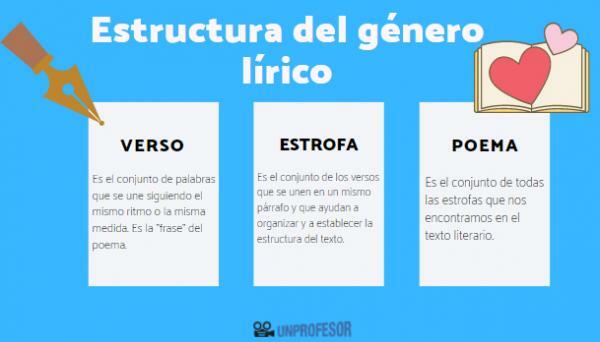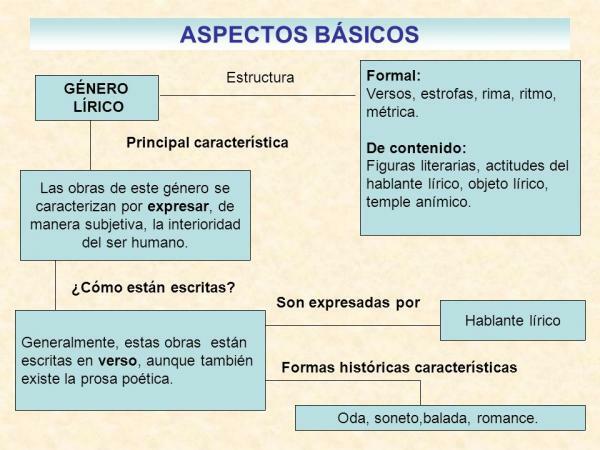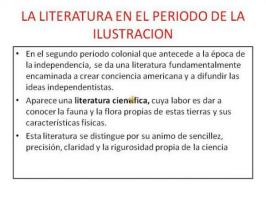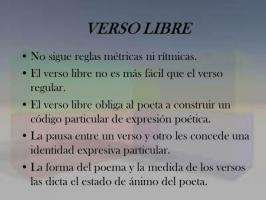Structure of the lyrical genre

When we talk about lyric we are referring to one of the most important literary genres and with the greatest tradition in our history. And it is that the lyric arose in Ancient Greece and is the genre that is linked to poetry, rhyme and meter. In this lesson from a TEACHER we will delve into the lyrical genre structure so that you better know how these types of literary texts are usually constructed and their most outstanding characteristics. We started!
Before entering fully into the structure of the lyrical genre, we are going to define the term so that you can understand what we are referring to when we use this word. The etymology of this term comes from lyric, a word that comes from Latin (lyrĭcus) and that refers to the lyre, an instrument with which different poems were set to music.
The lyrical genre is a literary genre in which the poet expresses his emotions, his thoughts and his feelings. It is an exhibition of the poet's point of view, presented with a very careful style and with a large number of literary resources that give it a more poetic and precious touch. Unlike
narrative genre, in the lyric, the objective is not to tell a story or present characters, but rather a text that wants to communicate, excite and offer a reflection deep and personal.Therefore, we are faced with a type of gender that has a subjective will and that takes advantage of the expressive possibilities of language to build louder texts that create striking and impressive images. To do this, use literary resources of various kinds and that give the text a greater personality.
Origin of the lyrical genre
It is one of the most traditional and important genres in our history, since its origin dates back to Ancient Greece. Poets began to cultivate a type of text that was not prepared to be read, but to be recited. For this reason, these texts began to be recited together with the musical accompaniment of the lyre, an instrument that gave the genre its name: lyric.

Image: Tes
Let's go into the subject and discover what is the structure of the lyrical genre. You must bear in mind that the vast majority of lyrical works are written in verse; although there are also other productions written in prose and known as poetic prose. In order to establish the structure of the lyric it is important to take into account the elements that make up a poem and who will be in charge of structuring the literary text.
Thus, the lyrical genre structure is the next:
- Verse. It is the set of words that is joined following the same rhythm or the same measure. It is the "phrase" of the poem.
- Stanza. It is the set of verses that are joined in the same paragraph and that help to organize and establish the structure of the text.
- Poem. It is the set of all the stanzas that we find in the literary text.
Elements that intervene in the structure of the lyric
In order to create a poem and define its structure well, it is important to take into account the elements of lyric which are basic and essential to its shape. They are as follows:
- Metrics. You can know the meter of a poem by calculating the number of poetic syllables in a verse.
- Rhyme. It is the repetition of the sounds from the last stressed vowel that appears in one of the verses.
- Rhythm. It is about the harmonic accent structure in which we make up the poem and that helps us to distribute the text.

To better understand the structure of the lyrical genre, it is essential to have a very clear concept: the meter. It's about the rhythmic structure of the poem and verses and that will help us to better define the rhythm, the tone and the melody that we pursue with the text.
To be able to determine the metric well, it is essential to analyze the syllables in a verse, since this way we can establish the metric for our text. In the Castilian tradition we find that, depending on the origin of the poetry, the meter can be Minor Art(where the use of the octosyllable abounds and is the structure of traditional poetry) or Major Art (where they are used, first of all, hendecasyllables and is typical of cultured poetry).
Therefore, the metric it is obtained by measuring the verses. And, to be able to make a good measurement, nothing better than to count the syllables. In this other lesson we tell you how to make the meter and rhyme of a poem so you have more examples on this topic.




